Transportation in South Korea is provided by extensive networks of railways,highways,bus routes,ferry services and air routes that traverse the country. South Korea is the third country in the world to operate a maglev train,which is an automatically run people mover at Incheon International Airport.

The Korea Railroad Corporation (Korean: 한국철도공사;Hanja: 韓國鐵道公社,branded as KORAIL,is the national railway operator in South Korea. Currently,KORAIL is a public corporation,managed by Ministry of Land,Infrastructure and Transportation.
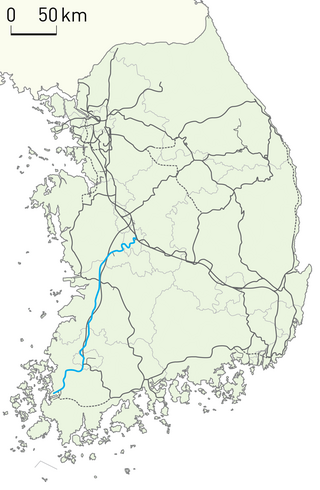
The Honam Line is a major railway line serving the Honam region in South Korea. The line is served by frequent passenger trains from Seoul to Gwangju and Mokpo.
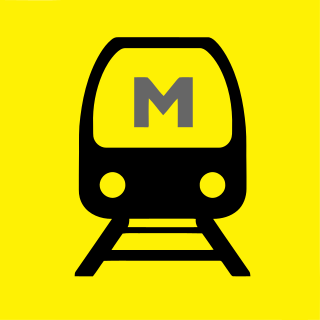
Rapid transit systems operate in six major South Korean cities,except for Sejong.
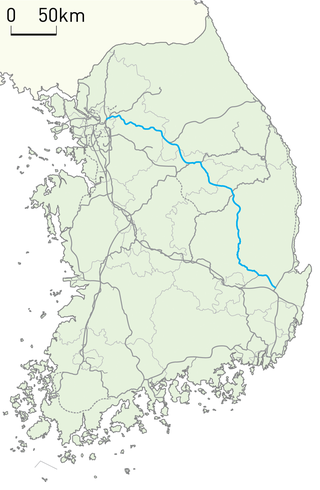
The Jungang line is a railway line connecting Cheongnyangni in Seoul to Moryang in Gyeongju in South Korea,traversing central South Korea from the northwest to the southeast. It is also referred to as the rail line of the Seoul Metropolitan Subway from Yongsan station to Jipyeong station. The section from Cheongnyangni to Dodam was designated as a semi-high-speed railway.
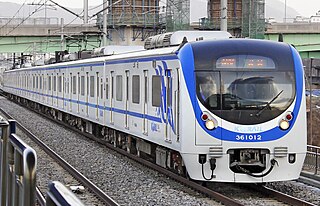
The Gyeongchun Line is a regional rail line between Seoul and Chuncheon,South Korea,operated by Korail. Its name is derived from Gyeong and Chuncheon. It was completely reconstructed in the 2000s. Service on it has operated between Sangbong station on the Jungang Line in eastern Seoul and Chuncheon station,as part of the Seoul Metropolitan Subway system,since December 21,2010. A class of regional rail service named ITX-Cheongchun began operations on February 28,2012,linking Chuncheon to Cheongnyangni and Yongsan Stations.

The Gyeongui Line is a railway line between Seoul Station and Dorasan Station in Paju. Korail operates the Seoul Metropolitan Subway service between Seoul Station and Dorasan Station.
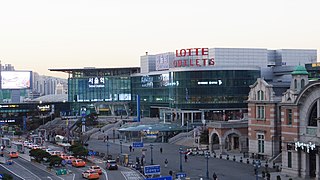
Seoul Station (Korean: 서울역) is a major railway station in Seoul,the capital of South Korea. The station is served by the Korail Intercity Lines and the commuter trains of the Seoul Metropolitan Subway.

Seoul Subway Line 1 of the Seoul Metropolitan Subway is a rapid transit and commuter rail line which links central Seoul,South Korea to Yeoncheon in the northeast,Incheon in the southwest,and Sinchang via Suwon and Cheonan in the south. The central underground portion of Line 1,running underneath Sejongno,Jongno,and Wangsan-ro avenues along Seoul's traditional downtown area,is the oldest subway-operated section in the Seoul Metropolitan Subway system. Its branches and services cover a large part of the Seoul Capital Area;totaling 218.3 km (135.6 mi) in route length.

The Mugunghwa-ho (Korean: 무궁화호) is a class of train operated by Korail,the main railway operator of South Korea. Mugunghwa trains are Korail's slowest tier of trains stopping at a number of towns and villages,and operating over a number of lines that are not served by other trains. Journey times are generally twice that of KTX trains and 25% longer than ITX express trains.

Rail transport in South Korea is a part of the transport network in South Korea and an important mode of the conveyance of people and goods,though railways play a secondary role compared to the road network. The network consists of 4,285 km (2,663 mi) of standard-gauge lines connecting all major cities with the exception of Jeju City on Jeju Island,which does not have railways;of the network,2,790 km (1,730 mi) are double-tracked and 3,187 km (1,980 mi) are electrified. In 2018,rails carried 11.5 percent of all traffic in South Korea –134.8 million passengers and 30.9 million tonnes of freight –with roads carrying 88.3 percent.

Cheongnyangni Station (Korean: 청량리역) is a major railway station located at Dongdaemun-gu,Seoul,South Korea. It serves as a terminus for passenger trains serving the eastern part of South Korea. KTX,ITX-Cheongchun,and Mugunghwa-ho trains terminates or stops at this station. Several Seoul Metropolitan Subway lines serve the station. These are:Seoul Subway Line 1,the Gyeongchun Line,the Suin–Bundang Line and the Gyeongui–Jungang Line.

The Saemaeul-ho,formerly known as the Saemaul-ho and Saemaul Express,is a class of train operated by Korail,the national railroad of South Korea,since February 8,1969. Before the introduction of the KTX express trains,the Saemaeul-ho was the fastest class of trains in South Korea,making the journey from Seoul to Busan in less than 5 hours. Saemaeul trains operated on several lines,but they now only operate on the Janghang Line.

Gwangju Station is a train station located in Gwangju,South Korea,353 km south of Yongsan station.

Susaek Station is a station on the Gyeongui–Jungang Line. It is also the former name of Digital Media City Station on Line 6 of the Seoul Subway. Mugunghwa-ho and Saemaeul-ho trains that operate up to Seoul or Yongsan Stations are serviced at the Susaek Train Depot behind this station.
The Korea Rail Pass,also commonly called the KR Pass,is a rail pass offered by Korail,the national railway operator of South Korea. The pass is offered exclusively to foreign visitors and is valid for most of the rail lines operated by Korail in the designated period,including KTX,the high-speed railway in South Korea. However,the pass is not valid for subways and tourist trains,even when they are also operated by Korail.

The Gyeongui–Jungang Line is a commuter rail service of the Seoul Metropolitan Subway system,operating on trackage from the Gyeongui Line and the Jungang Line.
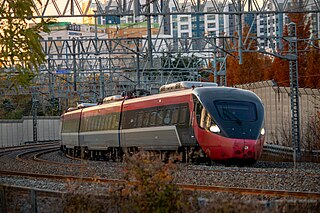
The Intercity Train eXpress-Saemaeul abbreviated as ITX-Saemaeul (Korean: ITX-새마을) is a class of train operated by Korail,the national railroad of South Korea,it was introduced on May 12,2014,to replace the Saemaeul-ho. The new ITX-Saemaeul trains have a faster average speed of 150 kilometers per hour. The name was taken from the Saemaul Undong after a public competition to determine the new train's name.

Intercity Train eXpress-Cheongchun abbreviated as ITX-Cheongchun (Korean: ITX-청춘) is a class of train operated by Korail,the national railroad of South Korea,introduced on February 28,2012. ITX-Cheongchun is the successor of the Gyeongchun Line Mugunghwa-ho which operated until December 2010. It is the only Limited express in Korea,and offers services comparable to those in Japan. In fact,it is known to benchmark Japan's Limited express. Korea's first double-decker coach ran on this line. This train connects Seoul,Guri,Namyangju,Gapyeong and Chuncheon. ITX-Cheongchun trains have an average speed of 180 kilometers per hour.

Nuriro (Korean: 누리로) is a class of train operated by Korail,the national railroad of South Korea,it was introduced on June 1,2009,to replace the short-range Mugunghwa-ho. The train was introduced as a replacement for the Bidulgi-ho/Tongil-ho/Mugunghwa-ho operating system between Seoul and Onyangoncheon,and will replace the short-range Mugunghwa-ho when a new train comes in. However,due to various problems,it is currently operating in Yeongdong Line and Jungang Line as a replacement for Mugunghwa-ho.


















